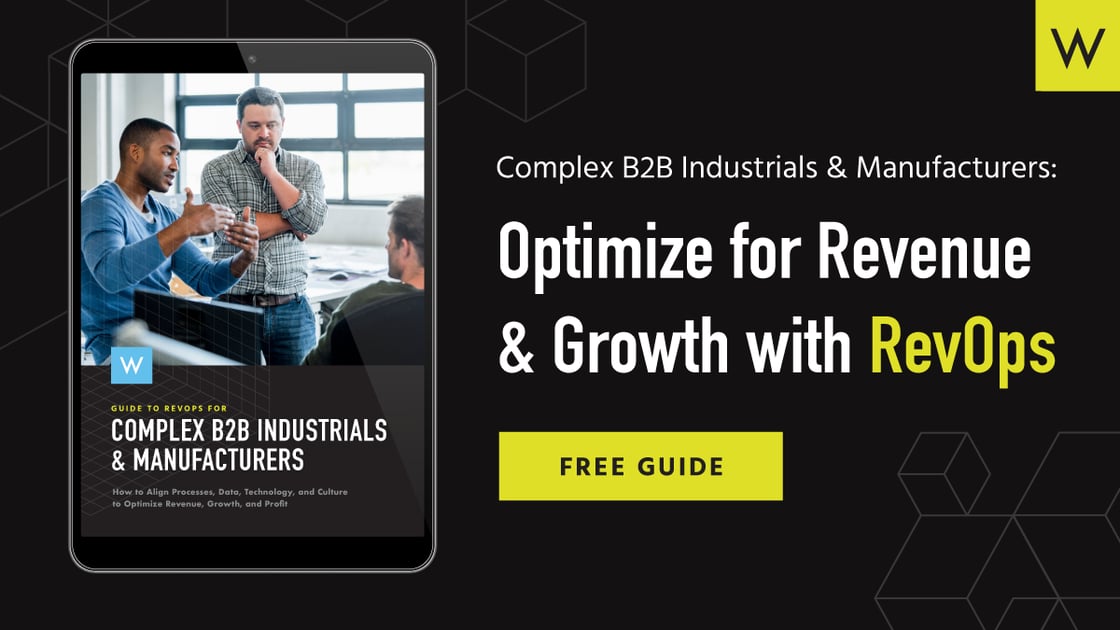


In late 2021 HubSpot rolled out something new and exciting: Operations Hub, a suite of tools that supercharges HubSpot’s CRM platform with tools that make data management easier, more efficient, and more accessible for everyone at your company! Improved integrations, robust data quality tools, flexible business process automation, and powerful data prep tools are now at your disposal.
This new hub is designed to align companies around clean and connected data, to keep processes efficient when scaling, and to empower operations teams to spend less time on reactive data tasks and more time on business strategy.
As HubSpot Chairman Brian Halligan once said at INBOUND, starting a business has never been easier. But scaling a business is harder than ever. Why?
As companies scale, things can get scattered. Every employee buys their favorite SaaS app. Every manager maintains their own spreadsheet. Every team builds their own processes. As time goes on, disconnection, mistrust, and miscommunication ensue, tanking efficiency. An ineffective operations strategy like that can lead to lost customers.
HubSpot believes that in order to scale better, companies need to run better. That requires an operations team that’s unchained from disconnected, dirty data and mundane, manual processes. You need an Operations team that’s unleashed to solve real business problems.
Revenue Operations (RevOps) is the answer.
With your operations teams working together under a unified RevOps strategy, they’ll be able to more efficiently set up your go-to-market teams for success and help delight your customers at scale. But merely adopting a strategy is not enough — you need the proper tools.
That’s why HubSpot launched Operations Hub. With Operations Hub, your ops team is equipped with what’s necessary for automation and successful scaling.
Operations Hub has five primary features to help execute a successful RevOps strategy:
Let’s take a closer look at each one.
Data sync is a new way to connect your existing business apps to HubSpot. With data sync, you can keep all your HubSpot records in step with the rest of your tech instead of spending hours exporting and importing with spreadsheets. Your customer data is always updated and consistent.
With the launch of Operations Hub, you’ll now have access to over 90 new HubSpot-built integrations, including Google Contacts, Mailchimp, Microsoft Dynamics, Mindbody, Bullhorn, and more. And this isn’t all; HubSpot plans to broaden data sync over time.
Unlike more traditional methods, data sync in Operations Hub allows for two-way integrations, the passing of future and historic data between systems, real-time functionality with two databases consistently synchronized, and customization.
Programmable automation enables you to execute code directly within HubSpot workflows. It encompasses three automated actions in HubSpot: a new “custom code” action in workflows, the “create a webhook” action in workflows, and custom-coded bot action in chatflows.
In the past, your automation in HubSpot was only as powerful as our predefined workflow actions. Now, your HubSpot automation is as powerful as your imagination.
As your company scales, customer touchpoints multiply. Maintaining a consistent customer experience across all those channels without sacrificing internal efficiency requires strong automation. But your business isn’t cookie-cutter, so your automation shouldn’t be either.
With the new custom workflow actions, your operations team can quickly adapt your processes to the ever-changing needs of your customers, ensuring that your company runs smoothly as it scales.
Programmable automation encompasses three automated actions:
If some of this sounds like you need to be a coding master, don’t worry! If you are, that’s awesome, don’t let us stop you. If not, that’s okay too! You can still create powerful automations without code.
Dirty data slows teams down and ruins customer experiences. With data quality automation, cleaning data isn’t just easy — it’s automatic.
Data quality automation entails a new set of workflow actions that format property values in certain ways: capitalizing letters, fixing date properties, updating phone numbers, and more.
This automation can give your team the time they need to focus on growth rather than putting out fires.
The new data formatting actions can be added to your workflows, just like any other action. Data quality automation doesn't just improve the data inside your HubSpot account. If you’re using integrations powered by data sync, that cleaned data can flow into all of your other apps as well, giving your team the high-quality data they need to do their jobs in all their apps.
As your business scales, your data proliferates. More objects, more fields, more metrics. It gets harder to build meaningful reports. Too often, workers are forced to lean on ops teams and analysts to answer one-off reporting requests. The result: slow, inconsistent, and often ad-libbed reporting for business users, and a reactive ops team struggling to stay afloat.
With datasets, ops teams can curate data into clean and reusable tables that can then be used by downstream users to create reports. This saves ops teams time and gives them more control over their data, and gives their downstream business users faster, easier, and more consistent insights.
As a part of datasets, for the first time, you can now calculate formulas directly in the context of HubSpot reporting — no need to bog down the CRM with additional fields solely for reporting purposes. With this new feature, you can calculate date differences (e.g. time to first conversion), sales cycle speed (e.g. time in deal stages), sales commissions, and more.
Snowflake is an industry-leading data platform, and it can be combined with an enterprise reporting tool like Looker to create a best-in-class business intelligence stack. Snowflake data share, then, is a fast, secure, and easy integration between HubSpot and Snowflake.
While many customers choose to do all their front-office reporting in HubSpot, some of HubSpot’s most advanced users prefer to unite their data in Snowflake (or another data warehouse). To make this process simple, Snowflake data share gives you easy and secure access to your HubSpot data in your Snowflake instance.
Note: This integration is currently available only if the region of your Snowflake account matches the region of your HubSpot account.
Related: What Does HubSpot Do? CRM-Powered Everything.
We’re just scratching the surface! Want the inside scoop on the newest HubSpot product line? As the lead marketer for Operations Hub, Ari led an Appleton HubSpot User Group meetup and covered how this set of tools can improve your operational efficiency and customer experience.
Click here to watch the recording of Ari's presentation, HubSpot Operations Hub for Efficiency and Growth.
Want to dig deeper into the RevOps framework and how it applies to complex B2B companies like industrials and manufacturing? Get Weidert Group's free guide to RevOps here:
This blog was adapted with permission from original content by HubSpot: The Ultimate Guide to Operations Hub.
Topics: Marketing Technology, HubSpot
